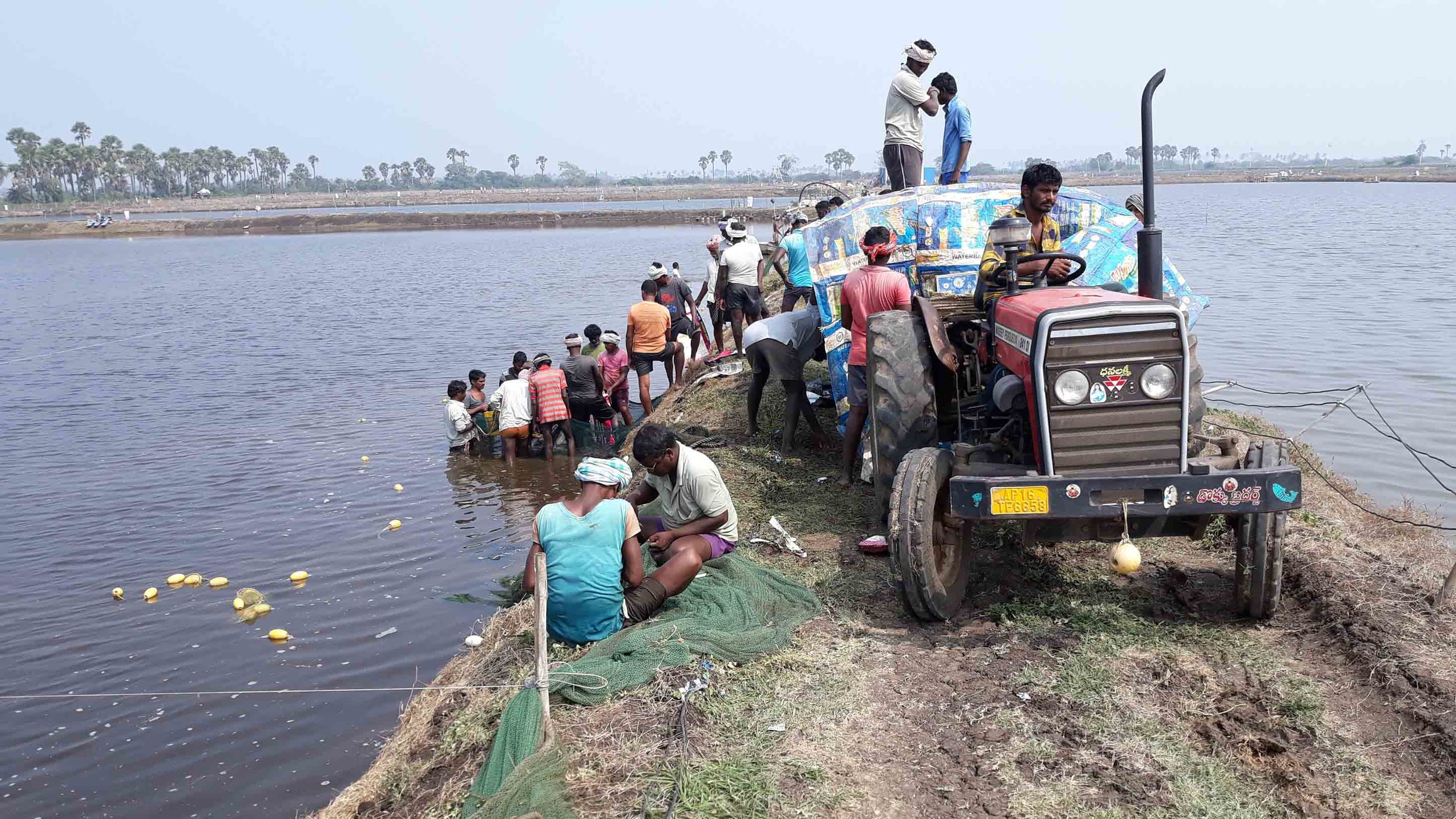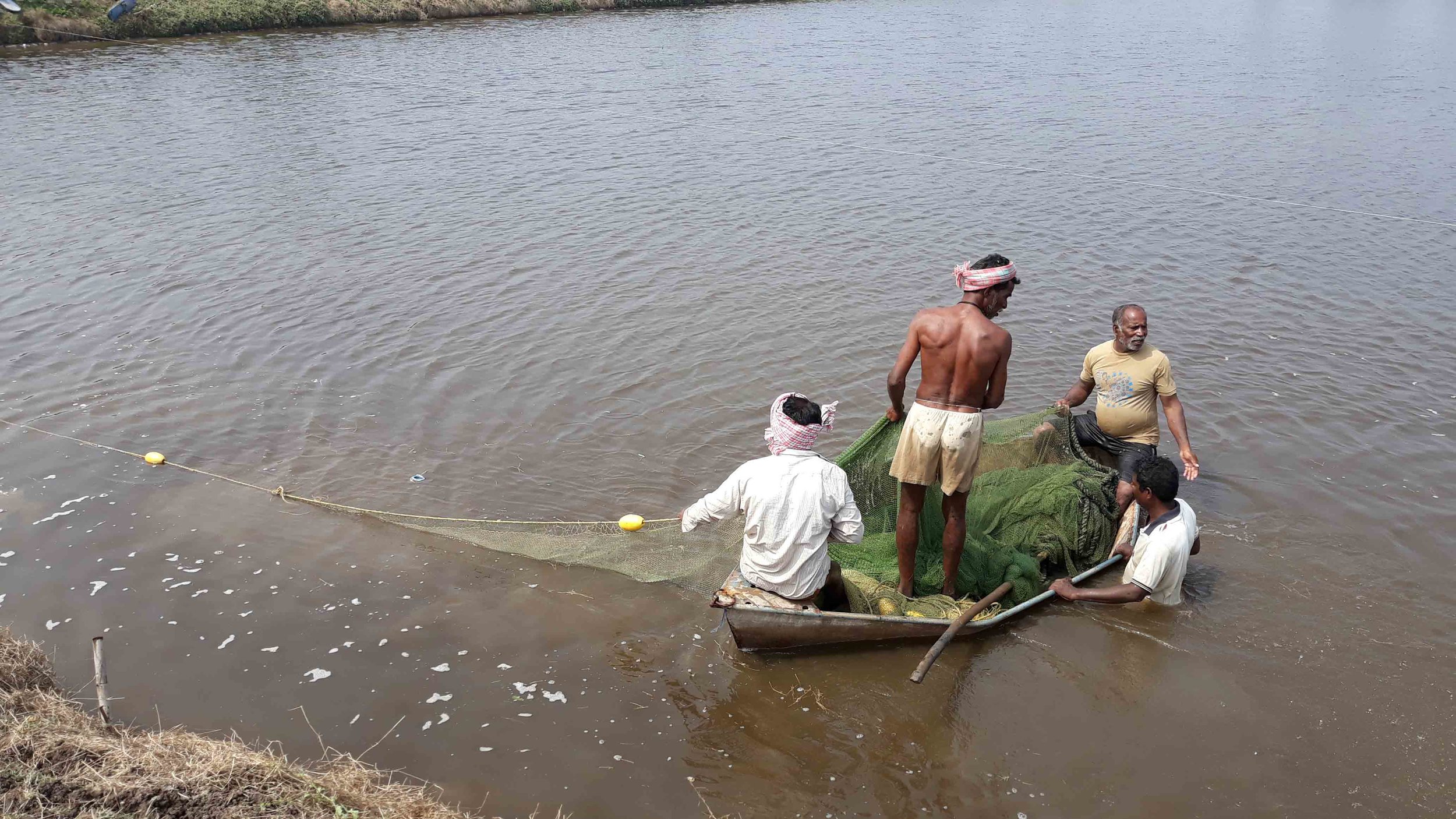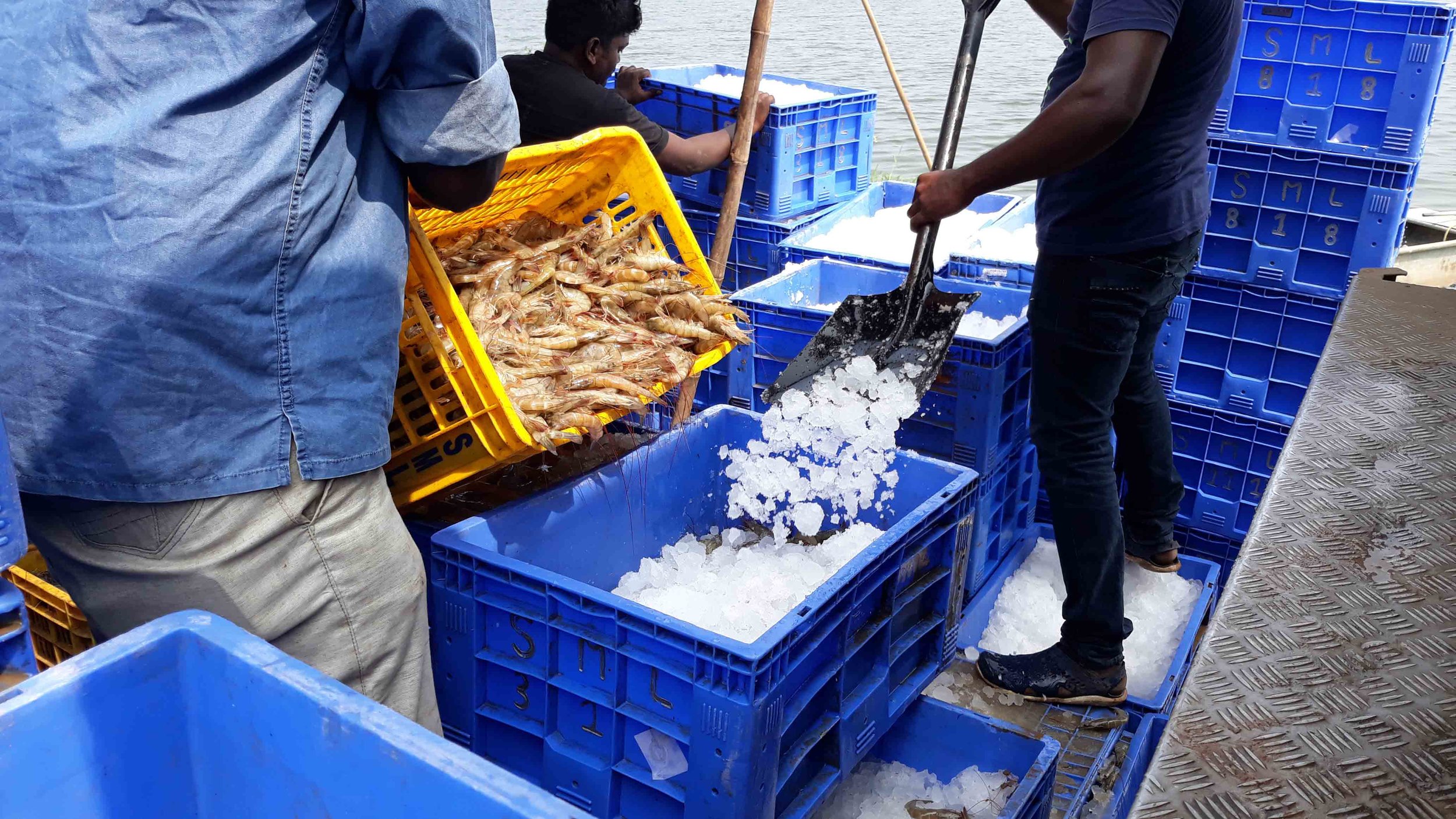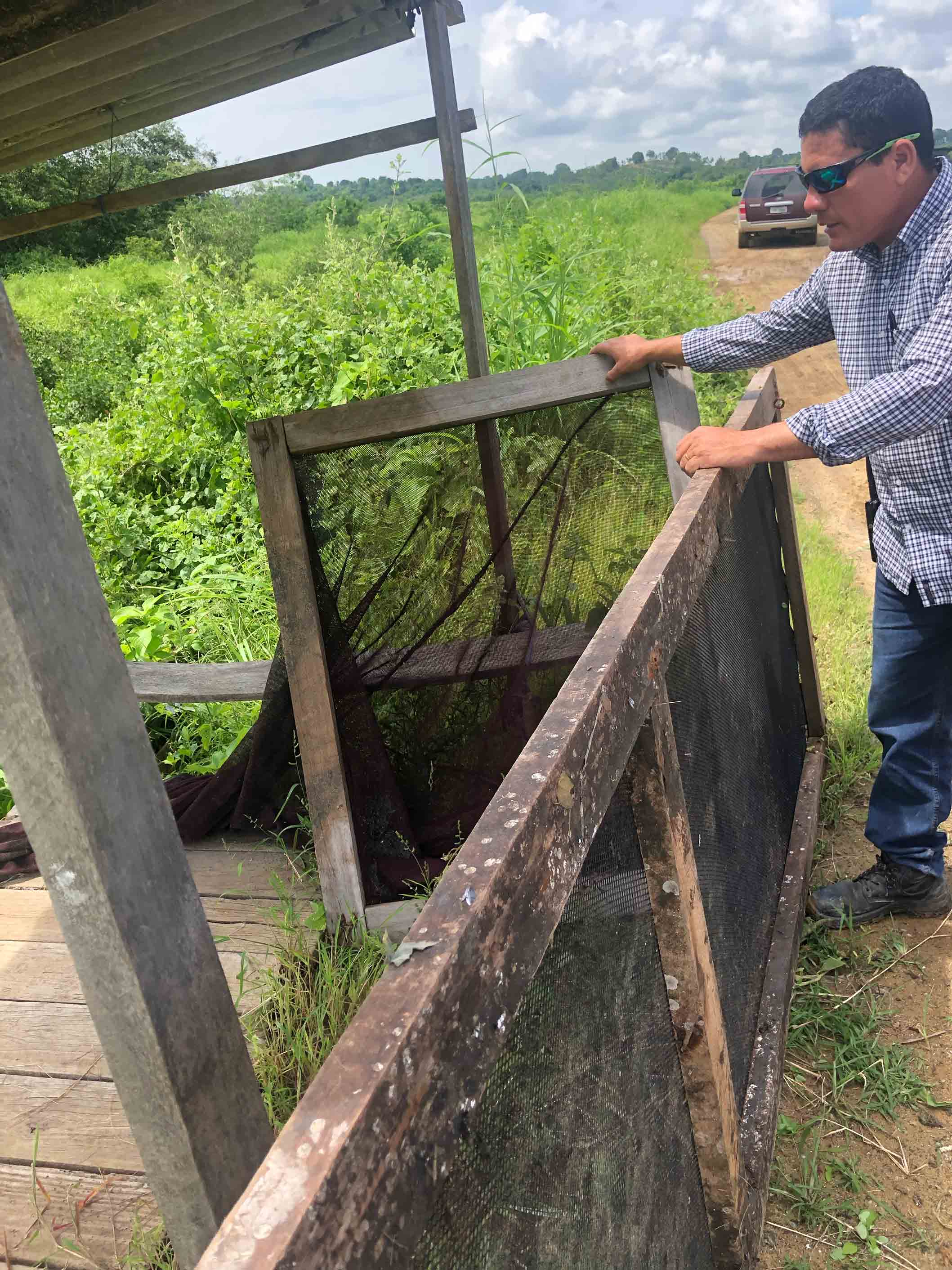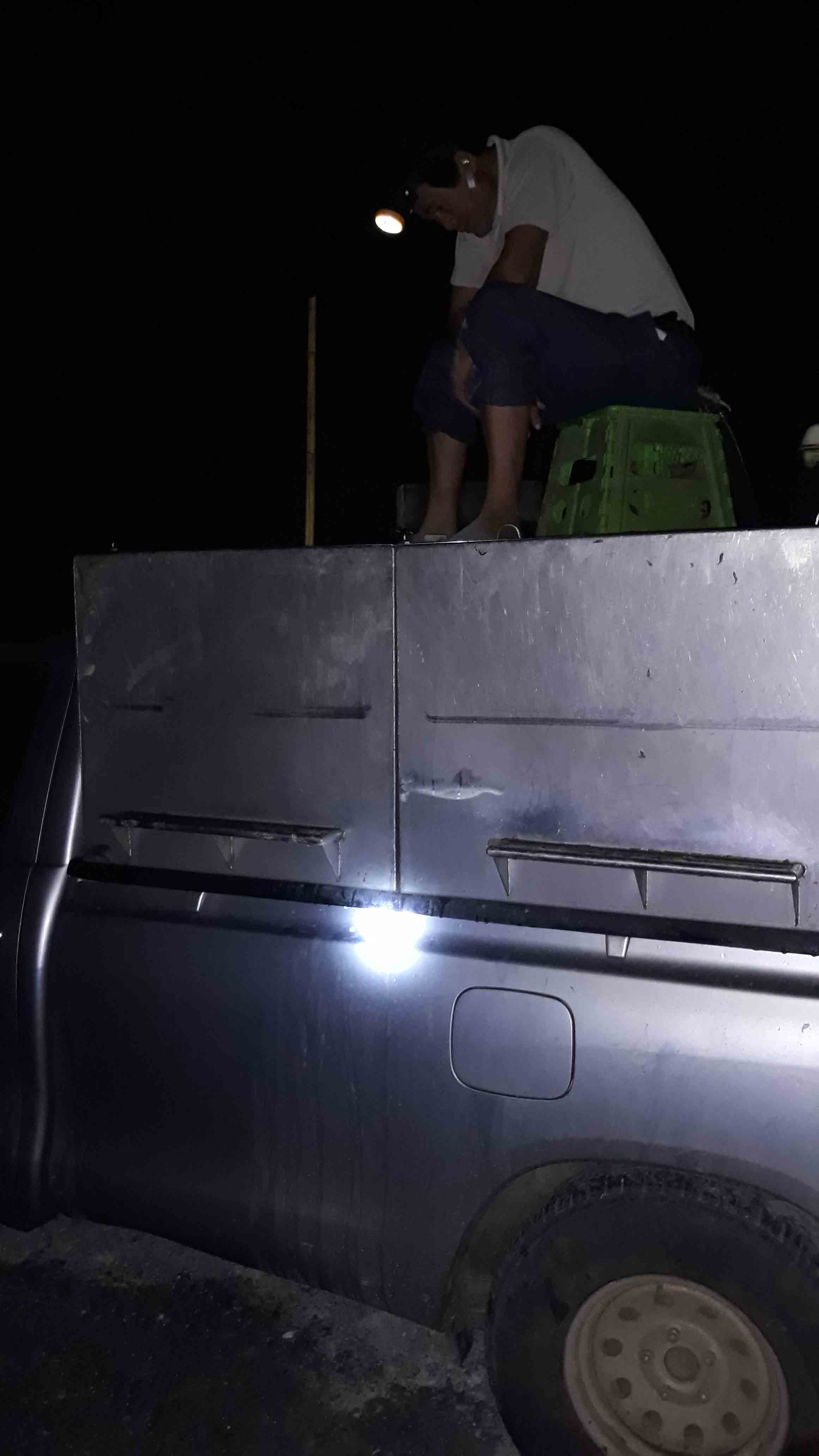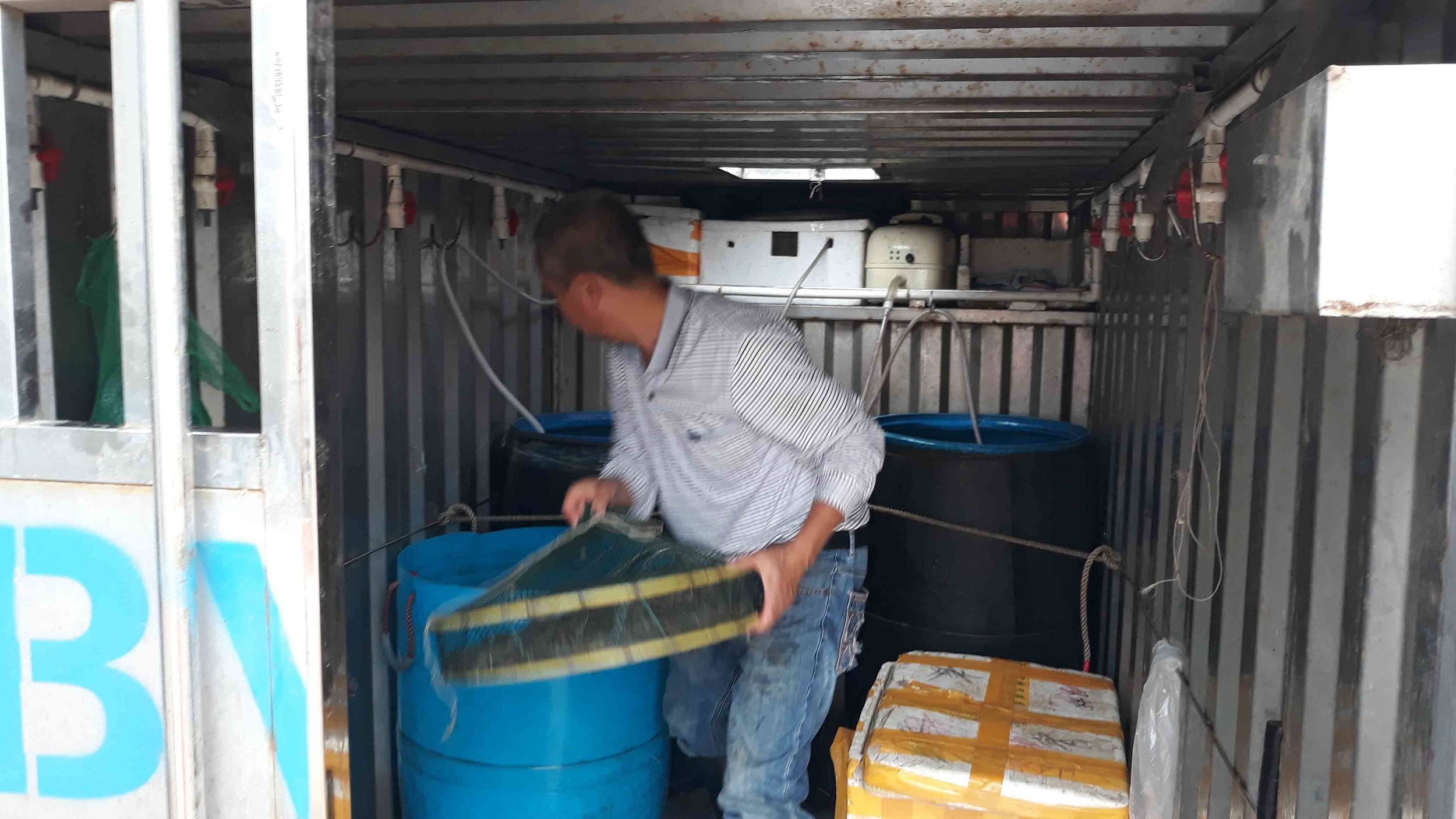harvesting techniques
Once the shrimp have reached the desired size for market, the farmers will capture the shrimp using cast-nets, seine-nets, drainage nets, or a mechanical pump system.
Circular cast-nets have weights around the edge. When casted into the pond, the weights sink and trap everything initially covered by the net. The weighted edge is then cinched up while still at the bottom of the pond to create a closed net that is ready to be hauled up. Seine nets work via a similar mechanism on a much larger scale. Instead being thrown, the seine net is set up in a large circle, with weights on one end and floats at the top in order to cover as much of the water column as possible. Seine nets are dragged across ponds to concentrate shrimp where shrimp are then hauled up and placed in iced creates. Drainage sock-nets are fitted exteriorly of sluice gates so when the pond is drained, the shrimp are carried by the water flow into the net. From these sock.nets, shrimp are either transported by hand into iced creates or are mechanically sucked up using harvesting pumps with automatically transfer shrimp into iced containers.
The method of harvesting depends on pond design, gear needs, and if the harvest is partial or full. Cast nets are mostly used for partial harvests while seine nets and drainage sock-nets are more efficient for final harvests. Pond design also determines the harvest method. Intensive ponds are drained (sometimes using a central axel pump) during or after the final harvest to be cleaned and disinfected before the next crop cycle. Harvesting generally takes place at night or early in the morning and in large teams so that there is ample time to transfer the crop to a processor on the same day. Once the shrimp have been captured, they are transferred into crates to be graded and sorted based on size and quality. Shrimp are either kept alive in aerated holding tanks during transport to ensure freshness when they reach the market. If they are not kept alive for transport, the shrimp are rinsed, packed in ice, and kept out of the sun as much as possible to minimize spoilage.
Below is a country comparison on harvesting methods and frequencies
Data overview
| www.shrimpfarm.tech by HATCH | Indonesia | India | Ecuador | Thailand | Vietnam | China |
|---|---|---|---|---|---|---|
| Partial harvest Cast-net use |
Yes, Cast net | None | None | Yes, Cast net | Yes, Cast net | None |
| Partial harvest frequency Frequency prior to final harvest | 2 to 3 | N/A | N/A | 3 | 2 to 3 | N/A |
| Final harvest Cast net, seine net or drained through a dyke gate into an external pocket net or mechanical harvester | Cast net or drained through a dyke gate into an external pocket net | Seine net | Drained through a sluice gate into an external pocket net or mechanical harvester | Seine net | Seine net | Seine net |
| Location of size sorting On-site or processor | On-site | Processor | TBC | Processor | Processor | Processor |
Summary
Farmers in Ecuador and China do not conduct partial harvests for their crops before the final crop harvest. In China, farmers claim that partial harvests require too much administration and cause disruption to production routines. Hence, they prefer to harvest once per crop cycle. Ecuadorian and Indian farmers may be driven to have partial harvest by low shrimp densities and large pond sizes. In contrast, intensive and super intensive farmers in Indonesia, Thailand, and Vietnam have financial incentives for partial harvests at least two to three times prior to the final harvest.
Harvesting methods are more depicted by pond design where farmers with low lying ponds small enough to use a net with use cast or seine nets to capture shrimp within ponds. This is the case for farmers in India, Thailand, Vietnam and China where farmers primarily use seines to collect shrimp while Indonesian farmers with low lying ponds will use cast-nets to collect shrimp. If the farm has the capacity to collect shrimp outside a sluice gate while the pond drains by gravity, farmers will use a sock-net to collect shrimp which is the case for some farms in Indonesia and all farms in Ecuador. In Ecuador, some will use a mechanical pump to harvest collected shrimp outside a sluice gate and pump these directly into containers filled with ice
After harvesting, collected shrimp need to be sorted into size categories ready for processing convenience. Farmers will also be paid according to the total volume and price for each size category in their harvested crop. Most smaller farms will sell to collectors or dealers while larger corporate farmers can sell directly to processors. In Indonesia, the sorting of shrimp is usually done on farms by the ‘collectors’ team prior to being transported to processors while in India, Ecuador, Thailand, Vietnam and China, shrimp are only sorted after arriving at the processors.
Innovation opportunities
There is immense opportunity for innovation in digital in-situ monitoring of shrimp biomass to predict harvest volumes and sizes as well as allow for more accurate timing and of feeding and feed amounts. Improved monitoring will give processing companies advance information on what is available, and it also gives farmers greater negotiation power when discussing prices with buyers. As the market demand for different shrimp size classes constantly fluctuates, knowing the size distribution of a particular crop allows farmers to set a harvest date that optimizes selling price. In-situ monitoring also negates the need for collectors to move sampling gear from farm-to-farm, which potentially spreads contamination along the way.
Faster methods to harvest shrimp is highly favourable to reduce stress during harvesting and avoid compromising flesh quality. Farmers who use mechanical harvesting pumps can harvest sometimes up to 10 tonnes per hour. This is usually takes over 4 to 5 hours if done manually using a larger team however, with mechanical pumps, better prices and higher profits should be acquired if faster harvesting speed is achieved.
For those that don’t have sluice gates, we expect that this method to become more available across regions if farmers can rent large water drainage pumps to drain ponds. Using large water draining pumps is popular already in Thailand.
Harvesting




